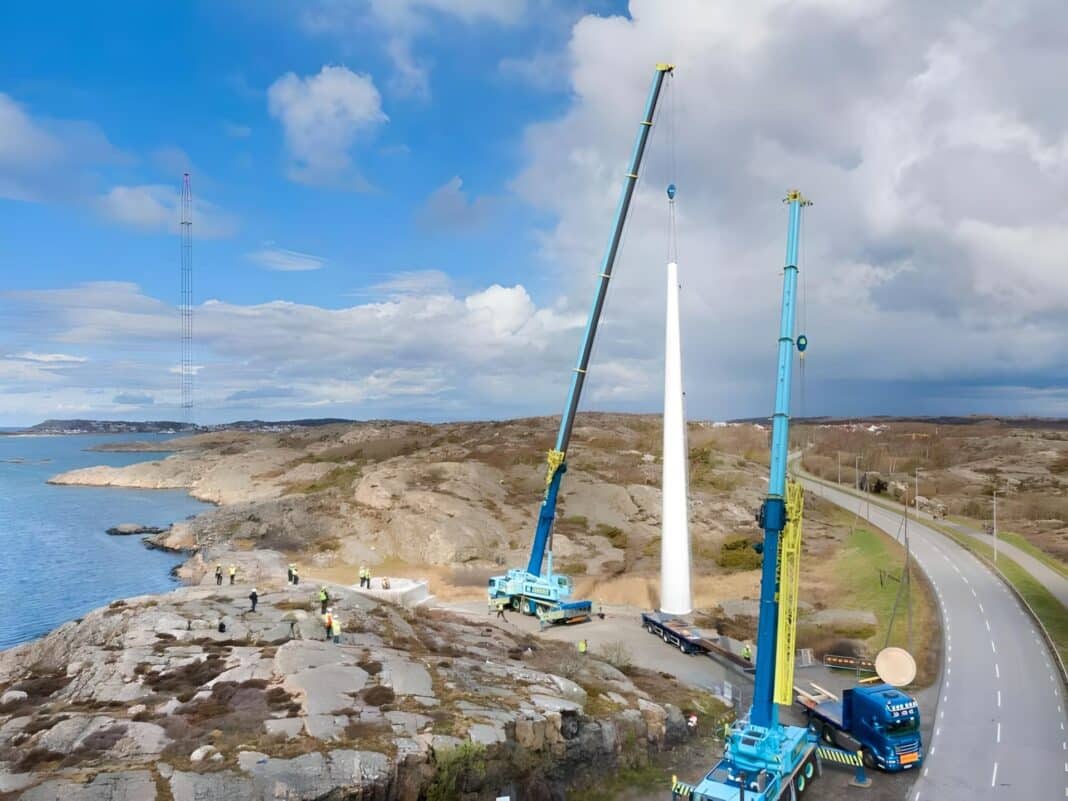Contact Energy has sought the go-ahead for a 55-tower wind farm near Wyndham in Southland. Nationwide, the race is on for further development of wind turbines, adding to existing projects.
Are these towers to be built using traditional steel constructs?
Contact had announced the potential 100m-plus high turbines will produce 300MW of electricity to power 150,000 homes.
Existing wind towers are built with each tower using 80% steel. The components are manufactured overseas and shipped to New Zealand ports.
If built with engineered wood (as in Europe), each tower captures 2000 tonnes of carbon, totalling 110,000 tonnes at Wyndham.
Swedish firm Modvion is building towers up to 150m, which is said to be far more cost-effective than steel. Even the blades were being constructed with wood in Finland.
According to Modvion company reports, the wood-based construct uses laminated veneer lumber. These products, including cross-laminated timber, are being produced by New Zealand firms.
This Swedish technology is being adopted by up to 88 countries, but not here.
Scandinavian firm Semco assisted wood tech company Modvion in developing wood-based structures made of engineered wood, thus enabling taller structures that are less costly and easier to handle than steel. This has led to better efficiency in megawatt output per turbine because of the height factor.
Among other advantages is the weight, wood being 30% lighter per tonne than steel, cutting transport costs compared with steel components. The carbon footprint escalates from mining to separation via coal-fired blast furnaces, manufacture, and transport to sites.
Firms, such as Nelson Pine Products and Levin-based Glulam’s Techlam division, provide a variety of engineered timber, mainly for construction purposes. It appears neither company had been approached for information on wind tower alternatives.
Could these firms manufacture these towers locally without extra funding to set up suitable plants?
Each tower would take a considerable tonnage of wood. It would be a big ask, but these companies have the expertise.
At a 3m-plus base, the timber would have to be specially rounded to fit space; thus, each section comprises four separate pieces.
Scion Research, when contacted, was unable to name any local entities involved with new wind turbine engineering. Specific questions to Contact on any investigative research into wind tower alternative constructs through several channels drew a blank.
A statement attributed to the company’s wind energy chief executive Mathew Cleland’s office replied:
“When the time comes to purchase the components for the wind farm [Slopehill near Wyndham], including turbines, we will follow our procurement policies, which include robust processes to select the best-suited supplier. We consider many factors, including cost, equipment life, the environment and the community”.
Matthew Cleland, CEO of Contact Energy
This begs the question: How much research has already been done to get the project to this stage? Carbon emissions do not appear as a factor in the construction phase.
Ministry for Primary Industries’ Te Uruu Rakau Forest Services passed the buck for inquiries to other stakeholders. Apparently, there had been no approach from government ministries or other agencies.
Other power firms with existing and proposed wind farms include Meridian and Mercury Energy.
Genesis Energy replied it was mainly concentrating on building a 500MW solar generation project. It is also trialling biomass for electricity generation at its Huntly Power Station.
However, it would look at options for wood-based constructs in future wind turbine projects.
Yet we sit on significant potential forestry products that would add further to our local industries.
So far, not much is happening in the field of wind energy efficiency affecting climate change. It is time local and regional authorities look at the latest alternatives to use our resources.
- Originally published in the Otago Daily Times.






